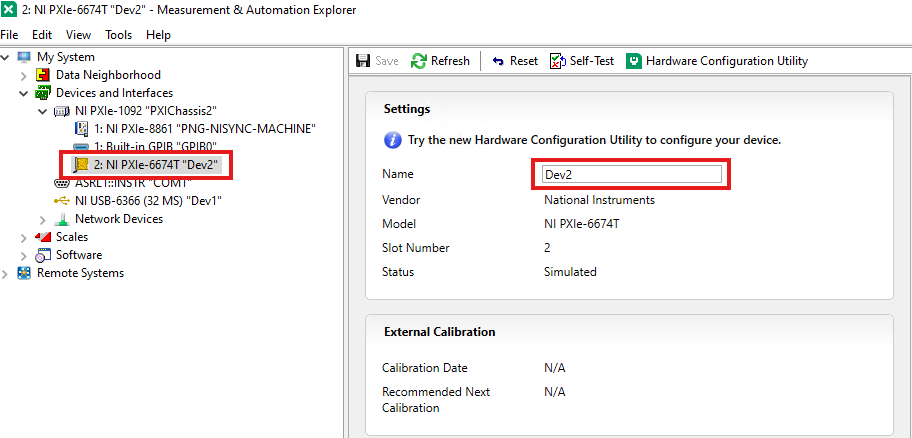| Info | Contains a Python API for interacting with NI-Sync. See GitHub for the latest source. |
|---|---|
| Author | National Instruments |
The nisync package allows you to develop timing and synchronization applications for both time-based and signal-based synchronizations with NI-Sync devices in Python.
Refer to the NI-Sync User Manual for API-agnostic information about NI-Sync concepts.
The package is implemented in Python as an object-oriented wrapper around the NI-Sync C API using the ctypes Python library.
nisync supports all versions of NI-Sync. Some functions in the nisync package may be unavailable with earlier versions of NI-Sync driver. Refer to the Installation section for details on how to install the latest version of the NI-Sync driver.
nisync supports Windows and Linux operating systems where the NI-Sync driver is supported. Refer to NI Hardware and Operating System Compatibility for which versions of the driver support your hardware on a given operating system.
nisync supports CPython 3.8+ and PyPy3.
Running nisync requires NI-Sync to be installed. nisync can be installed with pip:
python -m pip install nisyncVisit ni.com/downloads to download the latest version of NI-Sync. None of the recommended Additional items are required for nisync to function, and they can be removed to minimize installation size. It is recommended you continue to install the NI Certificates package to allow your Operating System to trust NI built binaries, improving your software and hardware installation experience.
In order to use the nisync package, you must have at least one device that supports NI-Sync installed on your system. Both physical and simulated devices are supported. You can use NI MAX or NI Hardware Configuration Utility to verify and configure your devices.
Finding and configuring device name in NI MAX:

Finding and configuring device name in NI Hardware Configuration Utility:

The following is a basic example of using an nisync.nisync.Session object. This example illustrates how to connect and disconnect clock terminals to synchronize devices using the onboard oscillator as the clock source. This is particularly useful in applications requiring precise timing and synchronization across multiple devices.
import nisync
from nisync.constants import PXI_CLK10_IN, OSCILLATOR
# Create a new session with the nisync library
with nisync.Session(resource_name="PXI1Slot10") as session:
# Connect the onboard oscillator to the PXI_CLK10_IN terminal
# This setup is typically used for synchronizing measurements across devices
session.connect_clock_terminals(OSCILLATOR, PXI_CLK10_IN)
# Perform measurements or operations that require synchronization
# Once operations are complete, disconnect the terminals
session.disconnect_clock_terminals(OSCILLATOR, PXI_CLK10_IN)nisync is licensed under an MIT-style license (see LICENSE). Other incorporated projects may be licensed under different licenses. All licenses allow for non-commercial and commercial use.